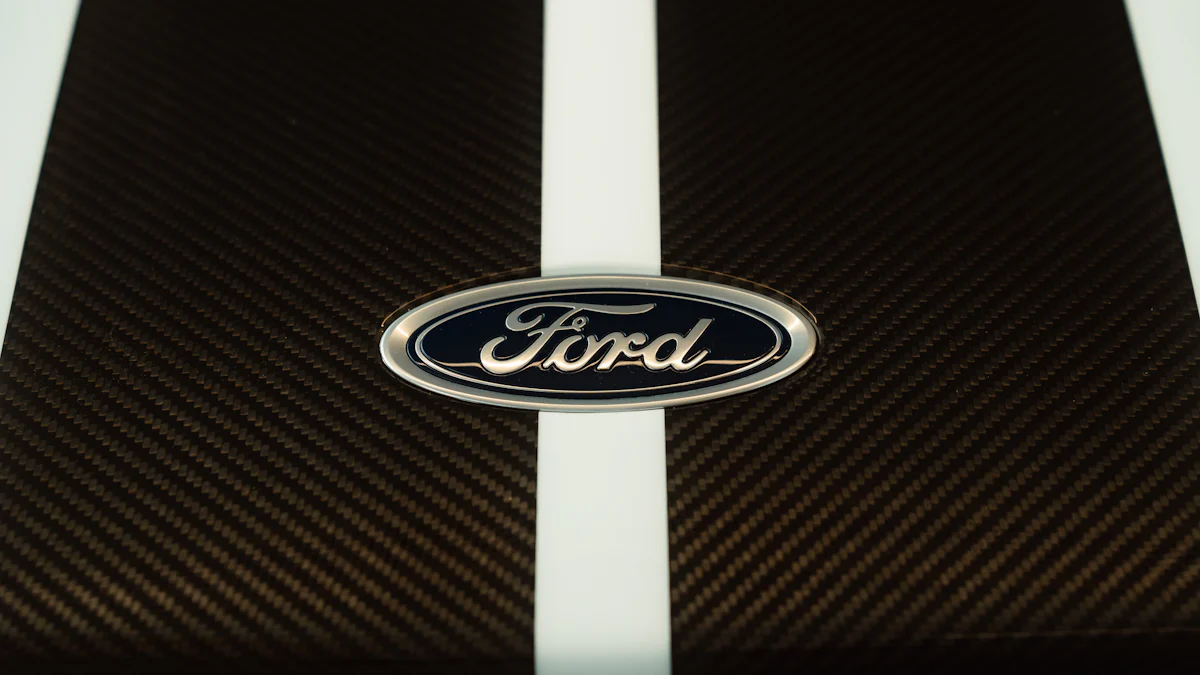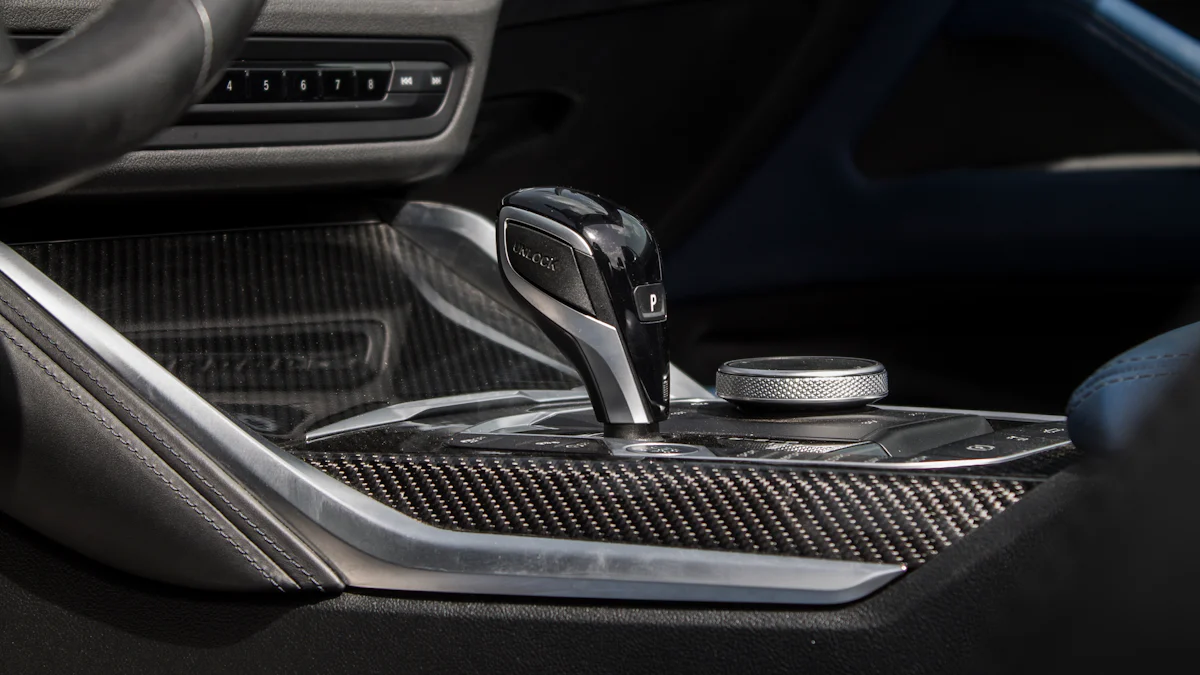How carbon fiber good for challenging old materials

Carbon fiber stands as a groundbreaking material, redefining what is possible in modern engineering. It is five times stronger than steel yet weighs only a fraction of it. This unique combination of strength and lightness makes it indispensable in industries where performance and efficiency matter most. Unlike traditional materials, carbon fiber resists corrosion, ensuring durability even in harsh environments. Its high stiffness and flexibility allow for innovative designs across various applications. These remarkable properties highlight why carbon fiber good for replacing outdated materials and driving progress in fields like aerospace, automotive, and construction.
Key Takeaways
Carbon fiber is five times stronger than steel while being significantly lighter, making it ideal for applications where weight reduction is crucial.
Its corrosion resistance ensures longevity and reduces maintenance costs, making it a reliable choice for harsh environments.
The design flexibility of carbon fiber allows for innovative and complex shapes, enabling advancements in various industries from aerospace to construction.
Using carbon fiber in automotive and aerospace applications enhances fuel efficiency and performance, contributing to more eco-friendly solutions.
Carbon fiber’s durability under extreme conditions makes it a game-changer in sports equipment, providing athletes with high-performance gear.
In construction, carbon fiber reinforces structures while simplifying transportation and installation, ultimately reducing labor costs.
Investing in carbon fiber not only meets today’s demands but also drives future innovation across multiple sectors.
Why Carbon Fiber Good for Modern Applications
Lightweight and High Strength
Carbon fiber stands out due to its exceptional combination of strength and lightness. It is five times stronger than steel while weighing only a fraction of it. This unique property makes it ideal for applications where reducing weight without compromising strength is crucial. For example, in aerospace and automotive industries, using carbon fiber parts allows you to achieve better fuel efficiency and performance. Unlike traditional materials like steel and aluminum, carbon fiber offers a high strength-to-weight ratio, making it indispensable for modern engineering challenges.
The lightweight properties of carbon fiber also enhance portability and ease of handling. Whether you’re designing aircraft components or sports equipment, the reduced weight translates to improved functionality and user experience. Its high tensile strength ensures durability, even under extreme stress, making it a reliable choice for demanding applications.
Corrosion Resistance and Longevity
One of the most remarkable features of carbon fiber is its resistance to corrosion. Unlike steel, which can rust over time, or aluminum, which may degrade in certain environments, carbon fiber remains unaffected by moisture and chemicals. This makes it an excellent material for structures exposed to harsh conditions, such as marine environments or industrial settings.
The longevity of carbon fiber further adds to its appeal. You can rely on carbon fiber parts to maintain their integrity and performance over extended periods. This durability reduces the need for frequent replacements, saving both time and resources. By choosing carbon fiber, you invest in a material that withstands the test of time, ensuring long-term reliability.
Design Flexibility and Versatility
Carbon fiber offers unparalleled design flexibility, allowing you to create complex shapes and structures that traditional materials cannot achieve. Its adaptability makes it suitable for a wide range of applications, from intricate components in robotics to large-scale architectural elements. The ability to mold carbon fiber into various forms gives engineers and designers the freedom to innovate without limitations.
The versatility of carbon fiber extends to its compatibility with other materials. You can combine it with metals, plastics, or composites to enhance specific properties, such as strength or thermal resistance. This adaptability ensures that carbon fiber good for meeting the diverse needs of modern industries. Whether you’re working on cutting-edge technology or everyday products, carbon fiber provides the tools to bring your vision to life.
Carbon Fiber: Suitable for a Variety of Uses Across Industries

Carbon fiber has transformed industries by offering unmatched strength, durability, and versatility. Its lightweight nature and high-performance characteristics make it suitable for a variety of uses, enabling advancements in fields that demand precision and efficiency. Below, we explore how carbon fiber is revolutionizing key industries.
Aerospace and Aviation
In aerospace and aviation, carbon fiber plays a critical role in enhancing performance and efficiency. Aircraft manufacturers use carbon fiber parts to construct lightweight yet robust components, such as fuselages, wings, and tail sections. This material reduces the overall weight of aircraft, improving fuel efficiency and lowering operational costs.
“Carbon fiber composite material is widely used in aerospace engineering due to its exceptional strength-to-weight ratio.”
Its resistance to extreme temperatures and chemical exposure ensures reliability in demanding environments, such as space exploration and military aviation. By incorporating carbon fiber, you can achieve superior aerodynamics and structural integrity, making it indispensable for modern aerospace engineering.
Automotive Industry
The automotive industry has embraced carbon fiber for its ability to enhance vehicle performance and safety. Car manufacturers use carbon fiber parts in vehicle frames, body panels, and interior components to reduce weight without compromising strength. This weight reduction improves fuel efficiency and acceleration, making vehicles more eco-friendly and high-performing.
In racing cars, carbon fiber provides a competitive edge by delivering speed and agility. Everyday vehicles also benefit from this material, as it enhances durability and crash resistance. Electric cars, which prioritize lightweight designs for extended battery life, rely heavily on carbon fiber to meet these goals. By integrating carbon fiber into automotive designs, you can create vehicles that are both efficient and resilient.
Sports and Recreation
Carbon fiber has become a game-changer in sports and recreation, offering athletes and enthusiasts equipment that combines strength, lightness, and precision. Manufacturers use carbon fiber to craft high-performance gear, such as golf club shafts, tennis rackets, bicycle frames, and fishing rods. These products provide better control, reduced fatigue, and improved performance.
For competitive sports, carbon fiber ensures durability under intense conditions. For example, racing bicycles made from carbon fiber are not only lightweight but also capable of withstanding high stress during competitions. Whether you’re a professional athlete or a hobbyist, carbon fiber enhances your experience by delivering reliable and high-quality equipment.
Construction and Infrastructure
Carbon fiber has become a vital material in construction and infrastructure projects due to its unmatched strength, durability, and adaptability. You can use carbon fiber to reinforce concrete structures, such as bridges, buildings, and tunnels, ensuring they withstand heavy loads and environmental stress. Its lightweight nature simplifies transportation and installation, reducing labor costs and project timelines.
Unlike traditional materials like steel, carbon fiber resists corrosion, making it ideal for structures exposed to moisture or chemicals. For example, in coastal areas, carbon fiber parts provide long-lasting reinforcement for piers and seawalls. Its high tensile strength also allows you to design slender, aesthetically pleasing structures without compromising stability.
The versatility of carbon fiber enables innovative architectural designs. You can mold it into complex shapes, creating unique facades or intricate structural elements. By incorporating carbon fiber into your projects, you enhance both functionality and visual appeal, setting new standards in modern construction.
Renewable Energy
In renewable energy, carbon fiber plays a crucial role in advancing efficiency and sustainability. Wind turbine blades made from carbon fiber are lighter and stronger than those made from traditional materials. This reduces the weight of the turbines, allowing them to generate more energy with less mechanical strain. You can also benefit from their durability, as carbon fiber parts withstand harsh weather conditions and prolonged use.
Solar panel manufacturers use carbon fiber to create lightweight frames that support photovoltaic cells. These frames improve portability and ease of installation, making solar energy systems more accessible. Additionally, carbon fiber’s resistance to environmental factors ensures the longevity of renewable energy equipment, reducing maintenance costs over time.
By integrating carbon fiber into renewable energy technologies, you contribute to a greener future. Its exceptional properties enable the development of efficient, durable, and sustainable energy solutions that meet the growing demand for clean power.
Industrial Automation and Robotics
Carbon fiber has revolutionized industrial automation and robotics by enhancing performance and efficiency. Robotic arms and components made from carbon fiber are lighter, enabling faster and more precise movements. This improves productivity in manufacturing processes, where speed and accuracy are critical.
You can also rely on carbon fiber parts for their durability in demanding environments. In factories, where machinery operates continuously, carbon fiber resists wear and tear, ensuring consistent performance. Its high stiffness and strength allow you to design compact yet powerful robotic systems that handle heavy loads without compromising stability.
The adaptability of carbon fiber supports innovation in robotics. You can create custom shapes and sizes to meet specific requirements, whether for medical robots, assembly lines, or autonomous vehicles. By choosing carbon fiber, you unlock new possibilities in industrial automation, driving progress and efficiency across various sectors.
How Carbon Fiber Compares to Traditional Materials

Steel vs. Carbon Fiber
Steel has long been a cornerstone of construction and manufacturing due to its strength and durability. However, carbon fiber offers a modern alternative that surpasses steel in several critical areas. You benefit from carbon fiber’s high strength-to-weight ratio, which makes it five times stronger than steel while being significantly lighter. This property allows you to design structures and components that are both robust and lightweight, improving efficiency and performance.
Steel is prone to corrosion, especially in environments with high moisture or chemical exposure. In contrast, carbon fiber resists corrosion, ensuring longevity and reducing maintenance costs. For example, in marine or industrial settings, carbon fiber parts maintain their integrity over time, unlike steel, which requires frequent upkeep. Additionally, carbon fiber’s flexibility enables the creation of intricate designs that steel cannot achieve without extensive processing.
“Carbon fiber’s lightweight nature and resistance to environmental factors make it a superior choice for applications where steel falls short.”
By choosing carbon fiber over steel, you gain a material that combines strength, durability, and adaptability, setting new standards for modern engineering.
Aluminum vs. Carbon Fiber
Aluminum is widely used for its lightweight properties and affordability. However, carbon fiber outperforms aluminum in key areas, making it a preferred choice for high-performance applications. Carbon fiber is lighter than aluminum yet offers greater strength, allowing you to reduce weight without compromising structural integrity. This advantage is particularly valuable in industries like aerospace and automotive, where weight reduction directly impacts fuel efficiency and performance.
Aluminum lacks the stiffness of carbon fiber, which can lead to deformation under stress. Carbon fiber parts, on the other hand, maintain their shape and strength even under extreme conditions. This makes them ideal for applications requiring precision and reliability, such as aircraft components or robotic systems.
Aluminum is susceptible to corrosion in certain environments, whereas carbon fiber resists both moisture and chemicals. This durability ensures that carbon fiber parts last longer, reducing the need for replacements and lowering long-term costs. By opting for carbon fiber, you invest in a material that delivers superior performance and longevity compared to aluminum.
Wood vs. Carbon Fiber
Wood has been a traditional material for centuries, valued for its natural availability and versatility. However, carbon fiber offers a modern solution that addresses the limitations of wood. Carbon fiber is significantly stronger and more durable than wood, making it suitable for demanding applications where wood would fail. For example, in construction, carbon fiber parts provide reinforcement that withstands heavy loads and environmental stress.
Wood is prone to cracking, warping, and decay over time, especially when exposed to moisture or extreme temperatures. Carbon fiber resists these issues, ensuring consistent performance and durability. This makes it an excellent choice for outdoor structures or products subjected to harsh conditions.
The design flexibility of carbon fiber also surpasses that of wood. You can mold carbon fiber into complex shapes and sizes, enabling innovative designs that wood cannot achieve. Whether you’re working on architectural projects or high-performance equipment, carbon fiber offers the adaptability and reliability that wood lacks.
By replacing wood with carbon fiber, you embrace a material that combines strength, longevity, and versatility, meeting the demands of modern industries.
Carbon fiber has redefined the possibilities of modern engineering. Its unmatched strength-to-weight ratio, corrosion resistance, and adaptability make it a superior choice over traditional materials like steel, aluminum, and wood. You can rely on its lightweight nature to enhance efficiency and performance across industries, from aerospace to construction. By embracing carbon fiber, you invest in a material that not only meets today’s demands but also drives future innovation. As technology advances, carbon fiber good for pushing boundaries and delivering solutions that were once unimaginable.
FAQ
What makes carbon fiber stronger than traditional materials?
Carbon fiber stands out due to its high tensile strength and rigidity. It is five times stronger than steel while being significantly lighter. This strength-to-weight ratio allows it to outperform materials like steel, aluminum, and wood in demanding applications. Its structure, made of tightly bonded carbon atoms, gives it exceptional durability and resistance to stress.
Why is carbon fiber considered lightweight?
Carbon fiber is composed of thin, strong crystalline filaments of carbon. These filaments are incredibly light compared to metals like steel or aluminum. Despite its low weight, carbon fiber retains high strength, making it ideal for industries where reducing weight improves performance, such as aerospace and automotive.
How does carbon fiber resist corrosion?
Unlike metals, carbon fiber does not rust or degrade when exposed to moisture or chemicals. Its chemical resistance ensures long-term durability, even in harsh environments like marine settings or industrial facilities. This property reduces maintenance needs and extends the lifespan of carbon fiber components.
Can carbon fiber withstand high temperatures?
Yes, carbon fiber exhibits high-temperature tolerance, making it suitable for applications requiring thermal stability. It maintains its structural integrity under extreme heat, which is why it is widely used in aerospace and motorsports. This property also makes it reliable for environments with fluctuating temperatures.
Is carbon fiber environmentally friendly?
Carbon fiber contributes to sustainability by improving energy efficiency in various industries. For example, its lightweight nature reduces fuel consumption in vehicles and aircraft. Additionally, its durability minimizes the need for frequent replacements, reducing waste over time. However, recycling carbon fiber remains a challenge, and ongoing research aims to address this issue.
How versatile is carbon fiber in design?
Carbon fiber offers unmatched design flexibility. You can mold it into complex shapes and sizes, enabling innovative designs that traditional materials cannot achieve. Its adaptability allows it to be combined with other materials, enhancing specific properties like thermal resistance or strength. This versatility makes it suitable for industries ranging from robotics to architecture.
Why is carbon fiber popular in the automotive industry?
In the automotive sector, carbon fiber enhances vehicle performance by reducing weight and increasing strength. Lightweight vehicles consume less fuel and accelerate faster. Carbon fiber also improves safety by providing high crash resistance. Electric vehicles benefit from its use, as it extends battery life by reducing overall weight.
How does carbon fiber compare to steel in construction?
Carbon fiber surpasses steel in several ways. It is stronger, lighter, and resistant to corrosion. While steel requires regular maintenance in moist or chemical-rich environments, carbon fiber remains unaffected. Its high stiffness allows for slender, aesthetically pleasing designs without compromising stability, making it a preferred choice for modern construction projects.
Can carbon fiber be used in renewable energy?
Yes, carbon fiber plays a crucial role in renewable energy technologies. Wind turbine blades made from carbon fiber are lighter and more efficient, generating more energy with less strain. Solar panel frames crafted from carbon fiber improve portability and durability. These applications contribute to the development of sustainable energy solutions.
Is carbon fiber worth the investment?
Absolutely. Carbon fiber offers long-term benefits due to its durability, strength, and versatility. While the initial cost may be higher than traditional materials, its longevity and performance reduce maintenance and replacement expenses. By choosing carbon fiber, you invest in a material that delivers superior results across various applications.
